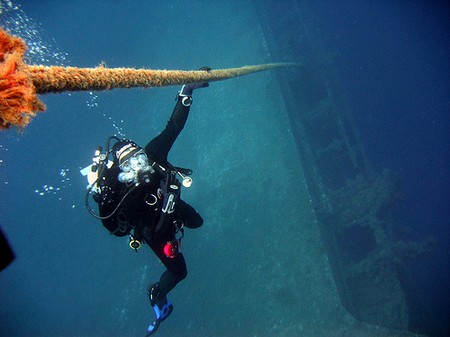Scuba diving is a relatively new sport and, in its early days, had a reputation for being dangerous. Today, the statistics show that scuba diving is not that dangerous. It does not even feature in the list of the 10 sports most likely to lead to a fatality (which does include horseback riding and fishing!). Millions of dives are made around the world every year without incident.
The bends
The main danger of diving is decompression illness (DCI), or ‘the bends’. This is a serious hazard. At worst, it can be life threatening.
To avoid decompression illness, you should always ascend slowly from every dive and make a safety stop between 5 m (16 feet) and 3 m (10 feet) from the surface. You should dive well within the parameters allowed by your computer and make decompression stops when and where required. It is sensible to leave long intervals between dives.
In the event of someone making an unusually fast ascent, missing mandatory decompression stops or feeling unwell in any way after diving, it is best to assume the onset of decompression illness and take measures to reduce its severity.
Treating the bends
Administering pure oxygen is an effective treatment for decompression illness. By breathing nothing but pure oxygen, the pressure gradient for the nitrogen that is still in solution within the tissues is increased at the same time, no nitrogen is inhaled. Many technical divers breathe pure oxygen as a routine measure after a dive with a particularly aggressive decompression schedule.
Most scuba instructors are certified for the administration of pure oxygen as an emergency therapy measure in cases of suspected decompression illness. All properly equipped vessels used for scuba diving will carry an emergency oxygen therapy kit.
The rule is to give plenty of oxygen and to give it as soon as possible. The limited supplies of oxygen available usually mean that oxygen poisoning is not possible, although short air breaks can be given every 20 minutes. The casualty should be made comfortable and reassured often. The oxygen is given via a demand valve if the person is conscious or via a constant flow mask and artificial ventilation procedures if not. It is sensible to assume that the casualty’s buddy is also likely to be suffering from decompression illness even if there are no obvious symptoms.
